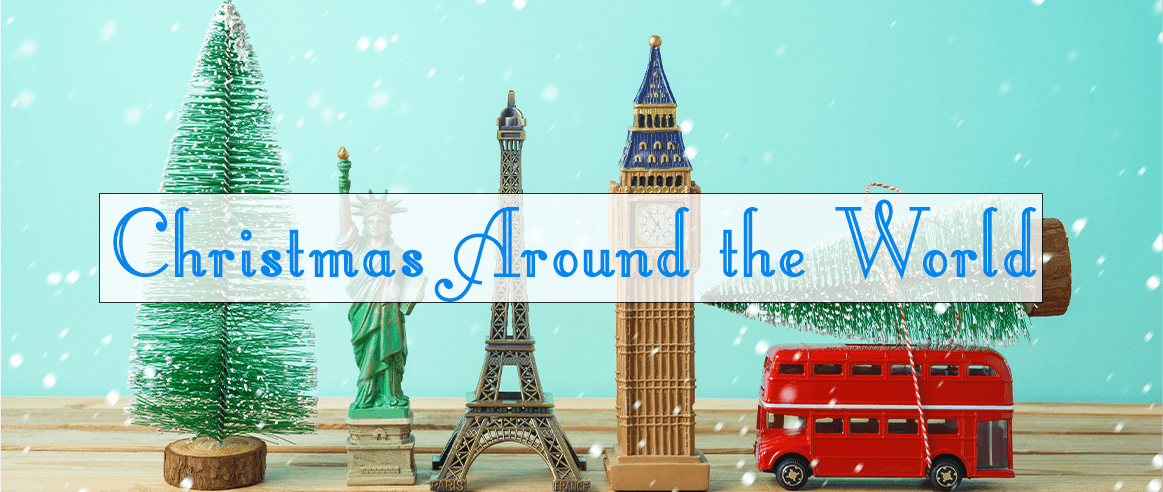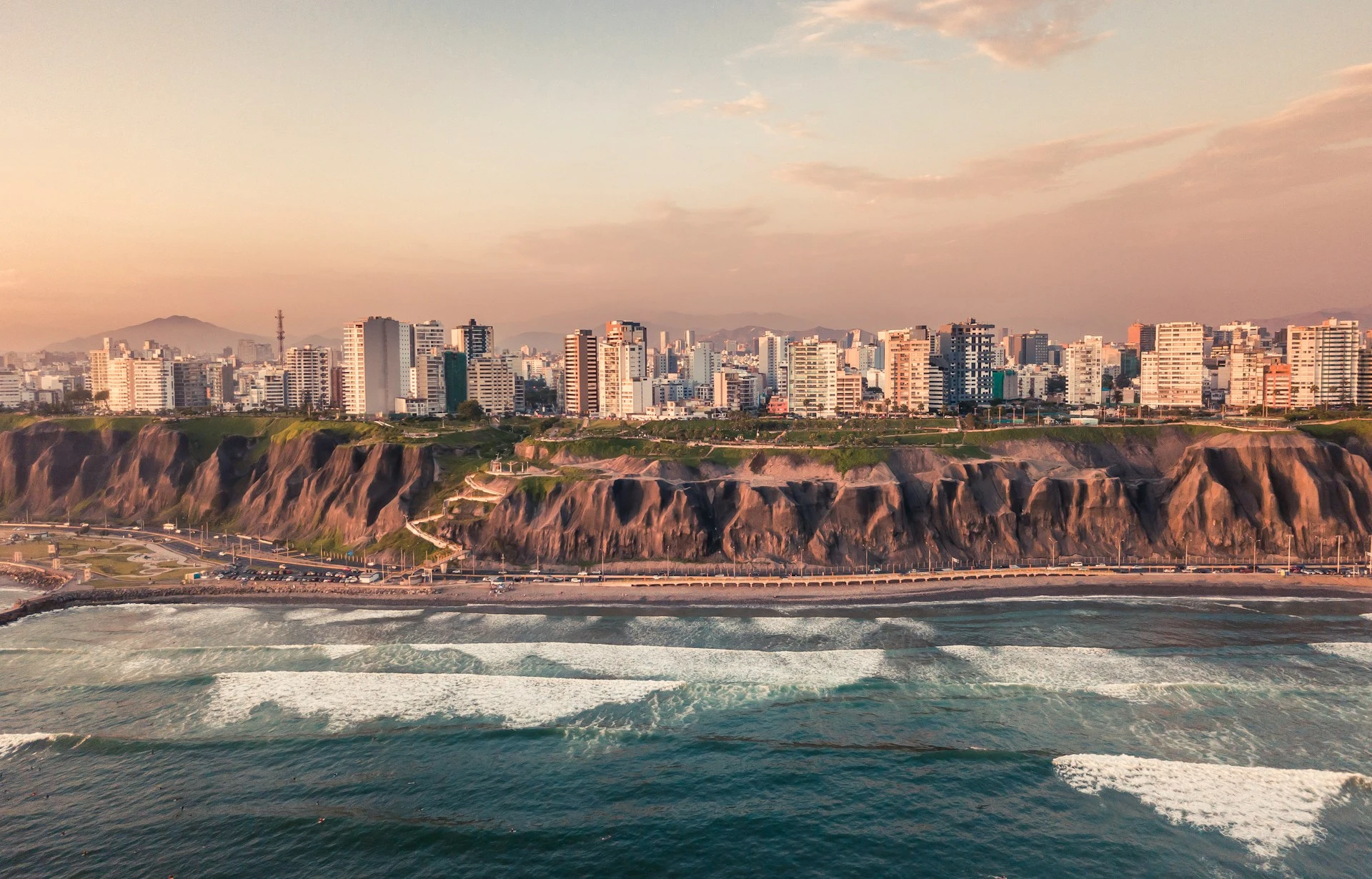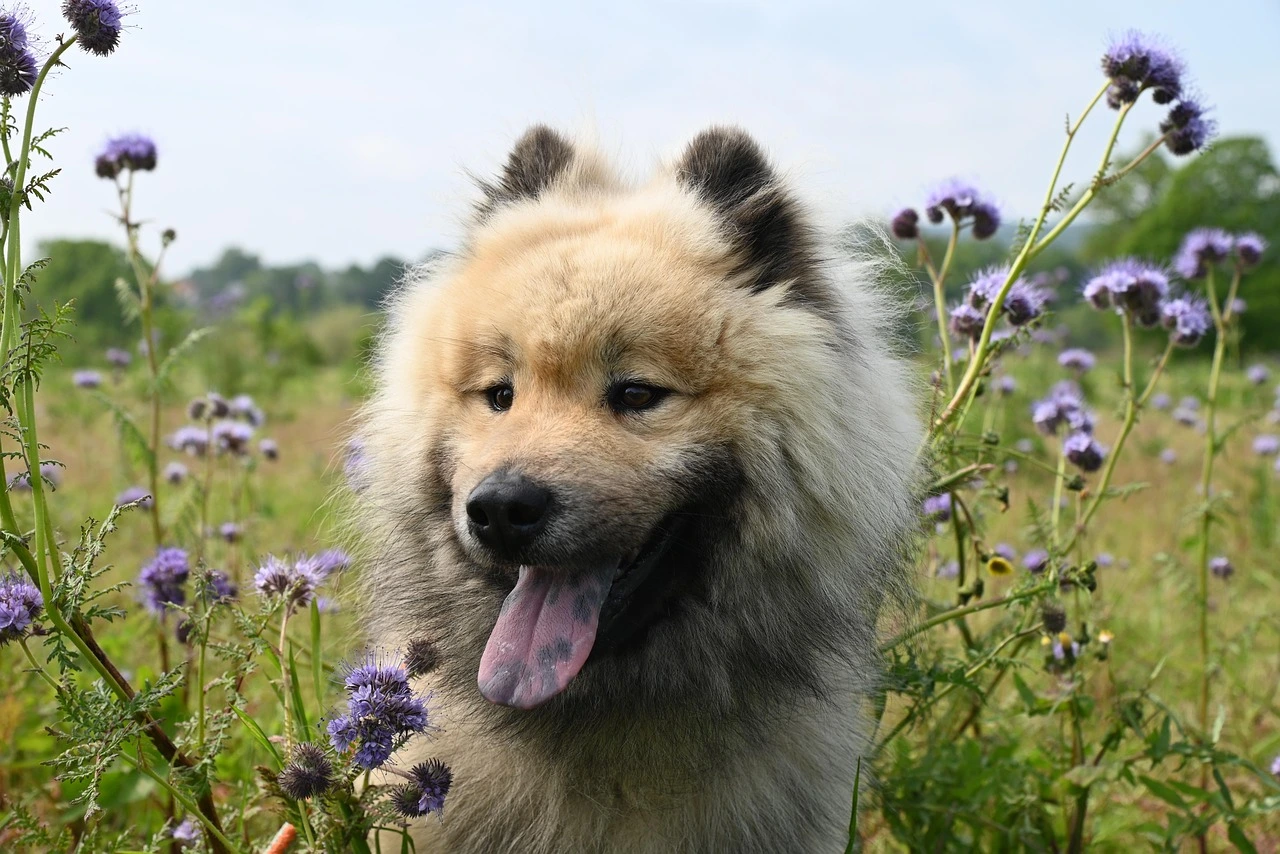Written by Jaden Parker
It’s always so interesting to learn new things. So, I took the time to find out how people all over the world celebrate Christmas. Obviously Christmas isn’t the only holiday celebrated during December, so I’ll be getting to that in part 3 of this little series. Either way, here is how Christmas is celebrated in some countries, letters I through N!
Iceland
In Iceland, a big holiday tradition is the arrival of the Jólasveinarnir. These are thirteen little magical imps who love to play tricks on people. One shows up each from December 12th to Christmas Eve, or Jól Eve. They originate from the 17th century sons of the bloodthirsty ogres Grýla and Leppalúði! They also leave gifts for children in their shoes placed on the windowsill. If a child has been bad, they might receive a potato or a message to “be good.” Presents can also be brought by Jólasveinn, which is like their Santa Claus.
For Jól, it is tradition that everyone has a new item of clothing and a book. The custom of book-giving is called Jólabókaflóð, which means “Christmas flood of books.” It started in WWII where books were one of few things not rationed, so they were easily accessible gifts. On Christmas Eve, people read their new book while drinking hot cocoa or Jolabland—a drink of orange soda and beer. Children can also expect a candle or a pack of playing cards for gifts, too!
The Jól season consists of six important days. The first is St. Thorlakur’s Day (Þorláksmessa) on December 23rd. This is Iceland’s major saint; and it is customary to eat skata, which is fermented fish, because historically Catholics didn’t eat meat up to Christmas Eve and during Icelandic winter there wasn’t much to pick from. The next big day of Jól is Aðfangadagur, Christmas Eve. Celebrations start at 6 p.m. (possibly because a new day in Iceland traditionally started at 6 p.m. instead of midnight!). The following day, Jóladagur, is typically celebrated with extended family. The main meal, Hangikjöt, is a leg of roast lamb. Some people like to have it smoked. They also eat Laufabrauð. This is bread made from thin sheets of dough that is fried and cut into little patterns. Each family has their own Laufabrauð pattern!
The fourth day of the Jól season is Boxing Day, or Anna Jóladagur. Public entertainment is prohibited on Christmas Eve and Christmas Day, so public dancing resumes on this day. Then, there is Gamlárskvöld and Nýársdagur (New Year’s Eve and Day). According to tradition, a lot of magical events happen on this night like talking cows, seals becoming human, and dead rising from their graves. Everyone also lights bonfires and has big fireworks displays. They call these customs sprengja út árið, which means “blowing out the year.” The final day of the season is their celebration of the Epiphany on the 6th of January. The Þrettándinn is celebrated with Elfin dances and bonfires as well.
India
Only 2.3% of the Indian population are Christians, so Christmas is a small celebration in India. Most of the Christian population reside in Mumbai and are Roman Catholics, so midnight mass is a very important service. After mass, families eat a huge feast made up mostly of curries and give each other presents. Santa Claus goes by various names in India and delivers presents to children on a horse and cart.
“Santa Claus” in India
| Name | Language |
| Christmas Papa | Malayalam |
| Natal Bua | Marathi |
| Christmas Thaathaa | Tamil |
| Christmas Thatha | Telugu |
| Christmas Baba | Hindi |
| Baba Christmas | Urdu |
In Goa, Christians have a lot of western customs from Portugal like caroling, decorating Christmas trees, and making fruit Christmas cake. They also enjoy many different sweets like neuros (dry fruit and coconut-stuffed fried pastry) and dodol (coconut and cashew toffee). They hang star-shaped paper lanterns between the houses on Christmas Eve and eat roast turkey or chicken. In South West India, Catholics fast from the first of the month to the 24th, breaking it after their midnight mass.
Indonesia
In a Muslim-dominated population, there are still roughly 20 million people who are Christians and celebrate Christmas. TVs broadcast Christmas-themed musical concerts, and the state-owned TV channel TVRI shows an event held by the Indonesian Government. Surprisingly enough, the most popular movies broadcasted during Christmas are the Home Alone series! Because Indonesia was ruled by The Netherlands, their Santa is Sinterklass, who brings presents to children on Christmas Day. The baking of cookies is a huge Christmas tradition, too, with Nastar, Kastengel, and Putri Salju being the most popular. Also, artificial Christmas trees are favored over the real ones, and you can even find some made from chicken feathers!
Ireland
For the Catholic Irish, decorations go up on the Feast of the Immaculate Conception (December 8th). Traditionally, people would put a tall, thick candle on their windowsill on Christmas Eve to welcome Mary and Joseph. San Nioclás or Daidí na Nollag brings presents for the children on Nollaig. Their Boxing Day is called St. Stephen’s Day, and like the UK, they hold football matches and horse races on this day.
Another big tradition they used to have was the Wren Boys Procession, where young children would carry a long pole with a holly bush tied to the top of it to people’s houses, sing a song with instruments like accordions and harmonicas, and ask for money. Christmas dinner can consist of turkey, spiced beef, Christmas pudding, fruit cake, and a round cake filled with caraway seeds. On the Feast of the Epiphany, the women get the day off and men have to do all the housework! They used to call it “Women’s Christmas” or Nollaig na mBan.
Israel
Neither Christmas nor Hanukkah are recognized as public holidays in Israel, but both are still celebrated. Christmas is a “normal working day,” and it’s uncommon to find any sort of signs of Christmas in the major cities. The Christian churches hold Christmas services and activities, and Dormition Abbey (the Benedictine Monastery) has carol concerts in the Church of Zion. The largest Christian population resides in Nazareth, and lots of Christmas lights are on the streets and markets to celebrate the holidays. There is a Christmas Eve parade that symbolizes Mary and Joseph’s journey of traveling from Nazareth to Bethlehem, and many different religious groups take part in it.
Italy
An Italian Christmas is unlike any other. The two big focuses of the holiday are food and the Nativity. On Christmas Eve, seafood and fish are eaten, as meat and occasionally dairy are not. Following mass, people have a slice of Panettone. It’s a fruity sponge cake. (The Panettone I had in Umbria was to die for!) Something Italian immigrants brought to the U.S. is the Festa dei sette pesci, or the Feast of the Seven Fishes. Common fish eaten during this feast are sardines, eel, salted cod, and calamari.
Children who go caroling usually dress as shepherds and play pipes; and on Christmas Eve, the film Trading Places plays on TV. For Christmas, Babbo Natale brings presents; and on the night of the Epiphany, children receive gifts from Befana, an old lady similar to the Babushka of Russia. They can also be visited by the Three Kings.
As for the Nativity scene, it was made popular by St. Francis of Assisi in 1223 after he visited the supposed birthplace of Jesus in Bethlehem. Naples has the most famous Nativity scenes in the world. They’re called the Presepe Napoletano, and the first one was in the Chiesa di Santa Maria del Presepe in 1025. Before the 16th century, only churches and monasteries had Nativity scenes. They’re put out in homes on December 8th, but the baby Jesus isn’t put into the manger until the night of Christmas Eve. Their Nativity scenes can sometimes be displayed with tiered shelves in a pyramid shape. There can also be candy and presents amidst the scene on the upper shelves. Neapolitan Nativity scenes also include normal people and objects like bakeries, famous figures, and houses. The largest Nativity scene in the world is in Naples and has 600+ objects in it!
Christmas trees became popular in Italy after WWII when Pope John Paul II started displaying one next to the Nativity Crib on St. Peter’s Square in the Vatican. The Vatican’s Nativity has seventeen life-size statues, nine of which are from 1842! Also, the tree is donated to the Vatican from a different Italian region or European country each year.
Japan
Christmas is not a religious holiday or celebration for people in Japan, but the sending of Christmas cards and presents became a popular custom adopted only recently from the United States. Japanese children usually only get one gift for Christmas, and the younger ones believe it comes from Santa (Santa-san or Santa-Kurosu). At the New Year, they receive monetary gifts in red envelopes from a lot of their relatives. Christmas gifts are usually only exchanged between close friends, and children rarely give gifts to other relatives. On December 25th, Christmas decorations—if any are up—are taken down and replaced with decor for the New Year, as this is the bigger celebration for them.
Interestingly enough, KFC is incredibly busy on Christmas, as fried chicken is often eaten on Christmas Eve and Christmas Day. In 1974, KFC had an advertisement called “Kentucky for Christmas!”, and this resulted in a successful boom for KFC every Christmas since. The other traditional food during Christmas is their Christmas cake, which is a delicious sponge cake with strawberries and whipped cream. The emoji for “shortcake” is actually Japanese Christmas cake!
Schools are closed on Christmas Day only because it’s near the start of the New Year, but many businesses treat the day as a working day. The Japanese also love the song “Ode to Joy,” which is the final act of Beethoven’s Ninth. They simply call it daiku, which means “number nine.” Historically, it seems that German prisoners of WWI sang it in Japan, so now the Japanese sing it in German throughout the holiday season. Tokyo Disneyland is also a major hit during Christmastime.
Kenya
Seeing family is a top priority during Christmas in Kenya. Their Christmas meal can include chapati flat bread; a barbecue of goat, sheep, chicken, or beef; and rice. This meal is called nyama choma and pairs nicely with homemade beer and other traditional dishes that are special to each tribe. The meal is eaten after midnight mass and a night filled with carol singing. Also, Santa doesn’t ride in a sleigh; instead, he can come by bike, camel, or SUV! Some stores celebrate by decorating with fake snow, and most Christmas trees are a Cypress tree. Boxing Day is also celebrated as a public holiday in Kenya. It allows people to see more friends and family or recover from the hardcore caroling parties.
Lithuania
For Lithuanians, they can expect snow and ice during Christmas. Kūčios, or Christmas Eve, is a bigger celebration than the actual day. Kūčios, the last day of Advent, is also the name they give their big Christmas Eve meal. Prior to the meal, the house is cleaned from top to bottom. Everyone takes a bath and washes up to protect them from evil spirits, and the working men clean up their farmyards. The meal should never have any meat, and everyone usually fasts right up to the meal. If a family member has passed away during the year or can’t come to the meal, they set an extra place at the table for them. Also, those who are going to be alone on Christmas Eve are invited to the meal.
The table is covered with straw then a clean, white tablecloth. Afterwards, the table can be decorated with candles and fir tree twigs. One superstition is that the type of straw you pull from under the tablecloth symbolizes the life you’ll have: a thick straw means your life will be happy and rich, a short straw means you’ll have a short life, and a long straw means you’ll have a long life. As the table’s centerpiece, a plate of Christmas wafers is set up.
The meal begins when you can see the first stars in the night sky. If it’s a cloudy night, then the head of the house decides the start of the meal. Each person at the table gets a wafer—and occasionally a slice of apple to symbolize the apple eaten in Eden. Typically, there are twelve dishes in the Kūčios meal:
- Dried fruit
- Beet soup with mushroom dumplings
- Herring
- Kūčiukai (pastries)
- Sauerkraut
- Mushrooms
- Christmas bread
- Oatmeal pudding
- Cranberry pudding
- Apples
- Biscuits
- Nuts
To drink, they have poppy seed milk, homemade cider, or water. Between the main course and dessert, “The Old Man of Christmas” comes with presents, and everyone exchanges them amongst themselves. Then, the children go to bed and the adults go to mass at midnight.
The Netherlands
Sinterklaas (St. Nicholas) travels to The Netherlands on the second Saturday of November. The Dutch believe that he lives in Madrid, Spain year-round and chooses a different harbor to arrive in so that as many children as possible get to see him. Roetpieten is Santa’s sidekick. Santa wears red robes and rides a white horse through town. He has other Sinterklaas helpers who dress like him throughout The Netherlands.
The Piets keep a record in a giant book of all the things a child has done that year. Bad children get taken back to Spain in a sack, but good children receive presents! It is Piet who climbs down the chimney—or through a window—to fill the children’s shoes with sweets while Sinterklaas waits on the roof on his horse. Some families have their children visited by this duo weekly until the 5th of December.
On Sinterklaasavond, banketletter is made, which is a biscuit shaped like the letter of the alphabet, for Sinterklaas parties. At the party, children follow the clues of a treasure hunt game to find little presents left by Sinterklaas. On St. Nicholas’ Day, the 6th of December, Sinterklaas takes the steamboat back to Spain. In the schools on this day, classmates draw each other’s names and make a present for whomever they choose. Then, they accompany the gift with a poem to give a clue as to who the sender is.
Christmas Eve has its own Santa Claus called Kerstman, and he comes from Lapland in Finland. On Eerste Kerstdag, people are more relaxed, whereas they visit their families and go shopping on Tweede Kerstdag (“second Christmas Day”). For this day, families sit at a table around a little stove and prepare their own meals; they call it gourmetten.
New Zealand
A New Zealand Christmas tree is a large tree called the Pōkutukawa that has red flowers on it. An early flowering of the tree means the summer will be hotter. If the flowers stay for longer, the summer will also be longer. Christmas lunch is a barbecue with ham slices, venison, shrimp, and/or fish. A hot fruit pudding with ice cream is a popular dessert to top everything off, along with pavlova and whipped cream, cold fruit salad, and meringues. Prior to Christmas lunch, everyone opens their presents.
Children receive presents from Hana Kōkō, and one of the most popular presents to receive are “jandals,” or Japanese sandals. Since it is summer for the Kiwis, people spend time at the beach or go camping. Many New Zealand towns also have a Santa parade with floats and marching bands. There are usually big light displays in the major cities like Wellington and Auckland.
Norway
Norwegian gifts are brought to children by Julenissen with the help of his small gnomes (Nisse). The gifts are exchanged on Christmas Eve, and children read the cards on the presents out loud before opening them. Similar to Denmark, some families celebrate Advent by sharing small presents on each day leading up to Christmas. Wheat is also left out for the birds to eat, like those in Finland do!
The biggest Christmas tradition is the giant Christmas tree that Norway gives to the UK to thank them for their help in WWII. It stands in Trafalgar Square in London.
Before Christmas was brought to Norway in the early 1000s when Christianity came, jòl was celebrated to commemorate the coming spring. Some children dress up as characters from the Christmas Story and go caroling. Over the holiday season, Norwegians enjoy foods like Julekake, a bread with raisins and cardamom, and Risengrynsgrøt, which is rice porridge. If you find the almond in your rice porridge, you can get a pink or white marzipan pig! The main Christmas meal is pork or mutton ribs with surkål. Surkål is sweet and sour cabbage with caraway seeds and apples. Like a lot of countries we’ve previously covered, “From All of Us to All of You” is played on TV on Christmas Eve, and “Dinner for One” is played on Lille Julaften (Little Christmas Eve), which is the 23rd.
Stay tuned for part three of how other countries celebrate Christmas and make sure to check out the posting with links to all the daily articles!









